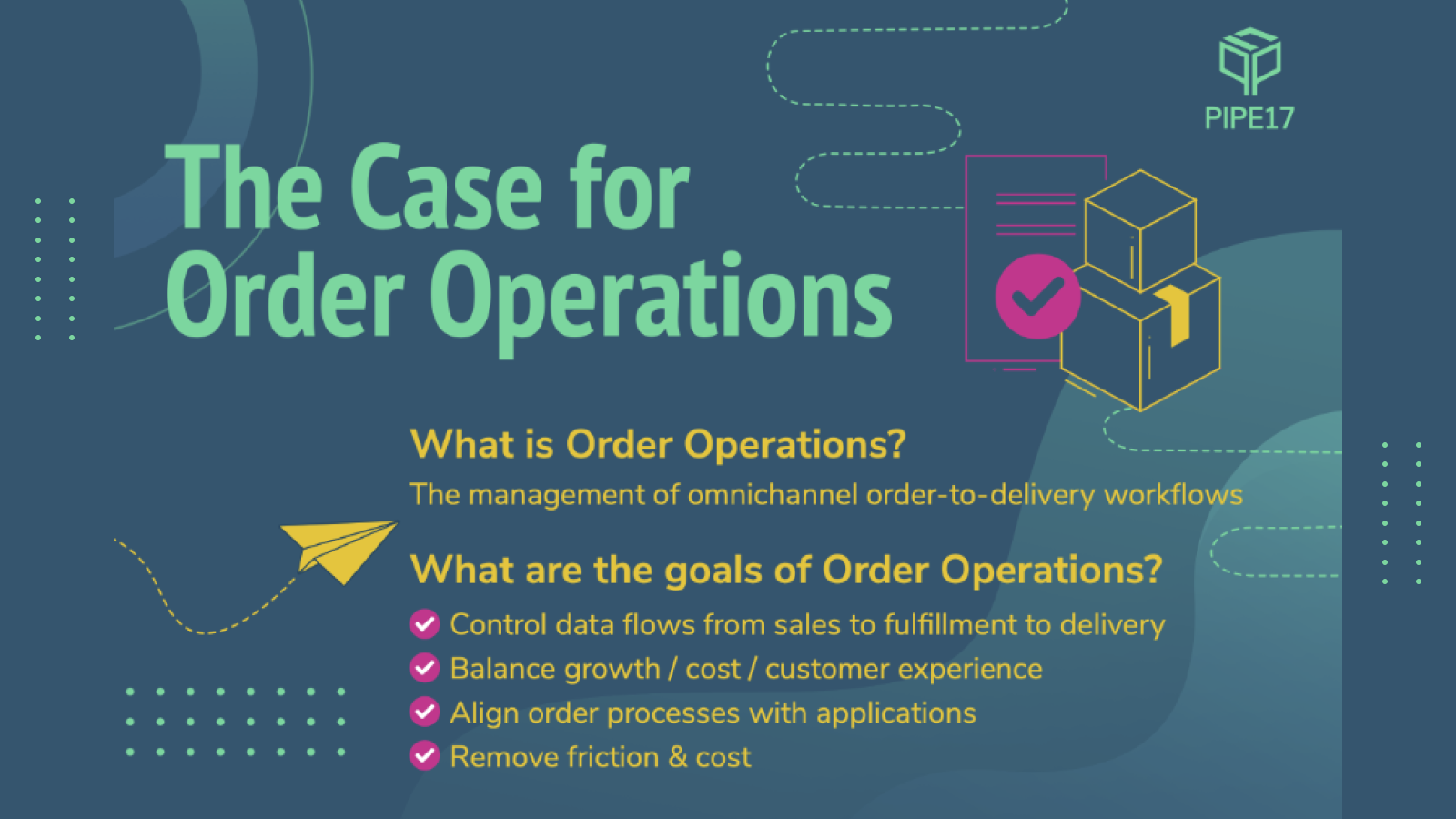Consistency and precision. Those are the two key qualities you need to successfully run e-commerce operations. That’s how you can spot potential issues before they become problems and ruin your day.
But here’s the thing: even though ops leaders tend to be more organized and meticulous than the average person, it’s still not easy. Our job is to — essentially — keep an eye on every single moving piece in the business and jump in with a fix before it knocks everything else out of whack.
That’s why operations routines are absolutely essential.
I’ve developed (and refined) mine over the last twenty years and it makes our days run smoother. That’s why I’m going to share it with you today. Use it to build or refine your own behind-the-scenes process. Or to see how other ops leaders tackle the daily grind.
Like most daily processes, my morning usually starts with the same thing:
Clearing out the D2C orders stuck in the pipeline
If there’s one thing I can guarantee, it’s this:
Every time you open up your fulfillment reports, you’ll see D2C orders stuck in the pipeline from the day before. And it’s your job to find them, figure out why they’re stuck, and then send them on their way. Quickly.
To see each day’s lollygagging culprits, eliminate any orders that came in after your warehouse’s fulfillment cutoff time. For example, if your 3PL has a fulfillment cutoff at 11 am, only pull the open orders that went in before 11am yesterday. On most typical days, I have to deal with about 5 to 11 open orders.
Next, we get to the fun part: figuring out why these orders got stuck. I start by going through the the most common reasons:
- some (or all) of the items are out of stock at the fulfilment warehouse
- the link between the API, the website and the warehouse is broken or down
- the shipping address is over the set character limit so the order was rejected by the WMS system
- the shipping address is missing a required field
- the shipping or billing addresses are in non-latin characters and the software can’t read them (emojis, cirillic, arabic, using chinese characters etc.)
- the billing address is invalid
- the order has been flagged for possible fraud
- the customer paid through PayPal but the saved address violated the rules set up in Shopify or the warehouse WMS system
After I’ve identified the culprit, it’s time to fix things. This may mean adding a dummy zip code for Hong Kong bound packages, verifying the billing address or getting on the phone with the warehouse to track down missing stock. Do whatever you need to do to clear out those open orders and get them to the warehouse.
When that’s done, it’s time to put your detective hat on and run checks for:
- unexpected chargebacks
- payments that haven’t been captured
- fraud alerts
Some of this will mean slacking or zooming with different team members. Or calling the warehouse. Or the customer. And when everything is nice and clean on the D2C side — and you’ve worked your way through your third coffee — it’s time to run the daily B2B checks.
Processing and troubleshooting B2B orders
B2B orders are larger and — typically — more complex. Unlike D2C orders that flow through Shopify, Amazon or eBay, some smaller B2B orders typically come through email and larger ones come through as EDI orders. Dealing with them is more complicated because you need to check inventory availability, vendor guide and shipping requirements and confirm payment terms with the accounting department.
This is the process I use to make sure B2B orders flow smoothly without costing us inventory or creating extra stress.
- Go through the incoming B2B orders and — if your systems don’t handle them automatically — manually enter each order into the warehouse system for fulfillment, including special instructions or requirements for the packing slip or packaging.
- Check with the accounting department on the terms for billing for the product so there aren’t any incidents, make sure an invoice is generated and sent to the customer. Better yet, integrate Quickbooks to your sales platforms so that is done automatically.
- For bigger orders — or any orders where inventory availability can be a challenge — check the supply chain to see what’s coming in so you can make sure the D2C side doesn’t run out of inventory.
B2B order management requires a lot of juggling, manual decision making and having a very clear view into your inventory. And it takes a lot of focus.
Continue mopping up messes as you go
Making sure D2C and B2B orders are flowing smoothly, inventory is on track, all warehouses are fulfilling everything as expected, and none of the systems are down is a tall order. And a major part of your day. But, as you’re taking care of all this, you also have to keep up with a constant stream of emails and Slack notifications.
I usually get about a hundred emails that need some kind of direct response or action each day. Maybe customer service has a whole stack of questions. Maybe there are a bunch of warranty questions and warranty returns. Maybe there are outstanding billing questions. Or the warehouse needs specific vendor guidelines communicated. Or a vendor needs some personal attention. The supply chain management is also a key daily focus, including knowing when freight is inbound and managing approvals for manufacturing and shipping products.
Here are just some things you have to keep an eye on while you’re chasing down outstanding orders:
- Your Amazon buy box or Prime status for various products. If you win it, it will increase order demand; if you lose it, it will also decrease demand. Generally the more products you’re competing for, the more complex this dance gets. That’s why you need marketing to keep you in the loop at all times and fulfillment times must meet or beat Amazon requirements.
- Shopify system trouble. If the system is down, orders won’t go through. And that’s a BIG problem. And all you can do is stay up to date: sign up for text alerts so that you know if and when the Shopify system is down. You would rather get that text alert than hear from an angry customer. (Speaking of alerts, sign up for any alerts available for the systems you use — and if your system providers rely on AWS, signing up for region specific alerts can help you stay ahead.)
- API trouble. When the API connections fail, it can cost you. Work with your 3PL’s API to set up system alerts.
- Channel specific marketing promotions. Depending on distribution, channel-specific promotions can put a bigger strain on certain warehouses or vendors. This can affect inventory availability. Make sure you’re in the loop.
- B2B chargebacks. These are costlier — and far more painful — than D2C ones. And they can happen for something as simple as the warehouse putting the label in the wrong spot.
These are just some of the operations curveballs that can show up at any time. I like to keep a checklist of them that I run through at the end of the day — this helps me make sure nothing gets missed.
Answering emails on the couch
Operations is a dynamic job. Even though a typical day usually goes like this, there are plenty of atypical days. Days when Shopify is down. Or Amazon is introducing a brand new update that changes the way they read keywords which affects orders. Or there’s a supply chain break.
On those days, all you can do is keep your head above water and hope that things return to a normal level of stress by the next one. But even on the worst days, this process helps keep me sane.






